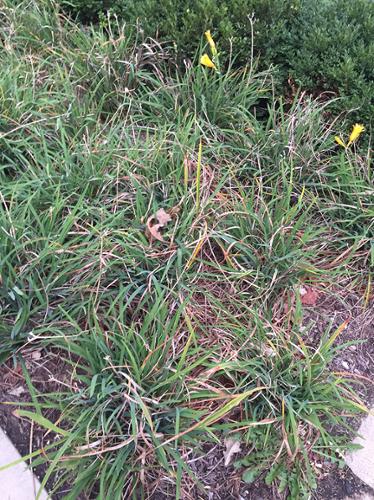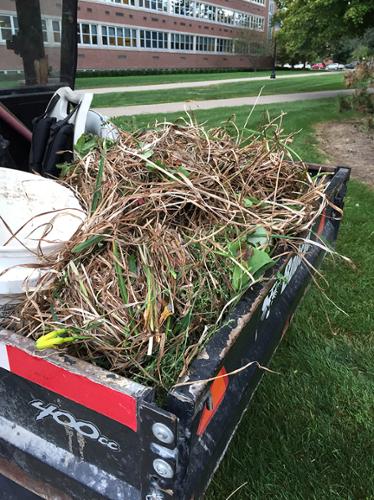Picture of the Week
November 16, 2020
FALL SANITATION IS IMPORTANT TO REDUCE THE AMOUNT OF DISEASE CARRYOVER.
Gail Ruhl, Retired Sr. Plant Disease Diagnostician
The parasitic fungi that cause leaf and fruit spots, powdery mildew, cankers, etc. can over-winter in infected debris in soil or under the plants, in cracks in the bark, in tree buds and infected branches and in 'mummified' fruit. These fungi wait in a dormant state until the following spring when rains and warmer weather induce the production of spores which are then disseminated by wind and rain to infect susceptible host plants during the growing season.
Sanitation (removal of infected plant material) is one of the most important methods of disease prevention. Sanitation helps to reduce the amount of disease-causing fungi present in the area, thus reducing the amount of potential disease for the next season.
Your sanitation regimen for ornamentals, trees, shrubs, fruits, and vegetables should include the following:
- Prune out and destroy all dead and diseased branches. Employ proper pruning techniques. (HO-4)
Remove fallen leaves and fruit to eliminate this potential over-wintering site.
- Remove dried, mummified fruits or vegetables. Remove old flower heads and stalks. This plant material should be composted, buried or removed from the garden.
- If plants were severely infected, it is advisable to remove and destroy them.
- Remove weeds. Weeds can provide a winter habitat for fungi and insects, as well as seed for next year's weed crop.
In reality, sanitation is a year round process. Therefore, removal of infected leaves, and diseased fruit from trees, berries, and vegetables as soon as problems appear will help to reduce the spread of disease.
Click image to enlarge
Roses infected with black spot actually benefit from sanitation practices (removal of infected leaves) through-out the growing season. Unfortunately, the fungus that causes black spot can overwinter on pruned, infected canes and thus preventative fungicide sprays will most likely be necessary the following season (BP-139-W)
Removal of infected daylily foliage in the Fall helps prevent fungal infection of newly emerging leaves next Spring (credit PPDL)





